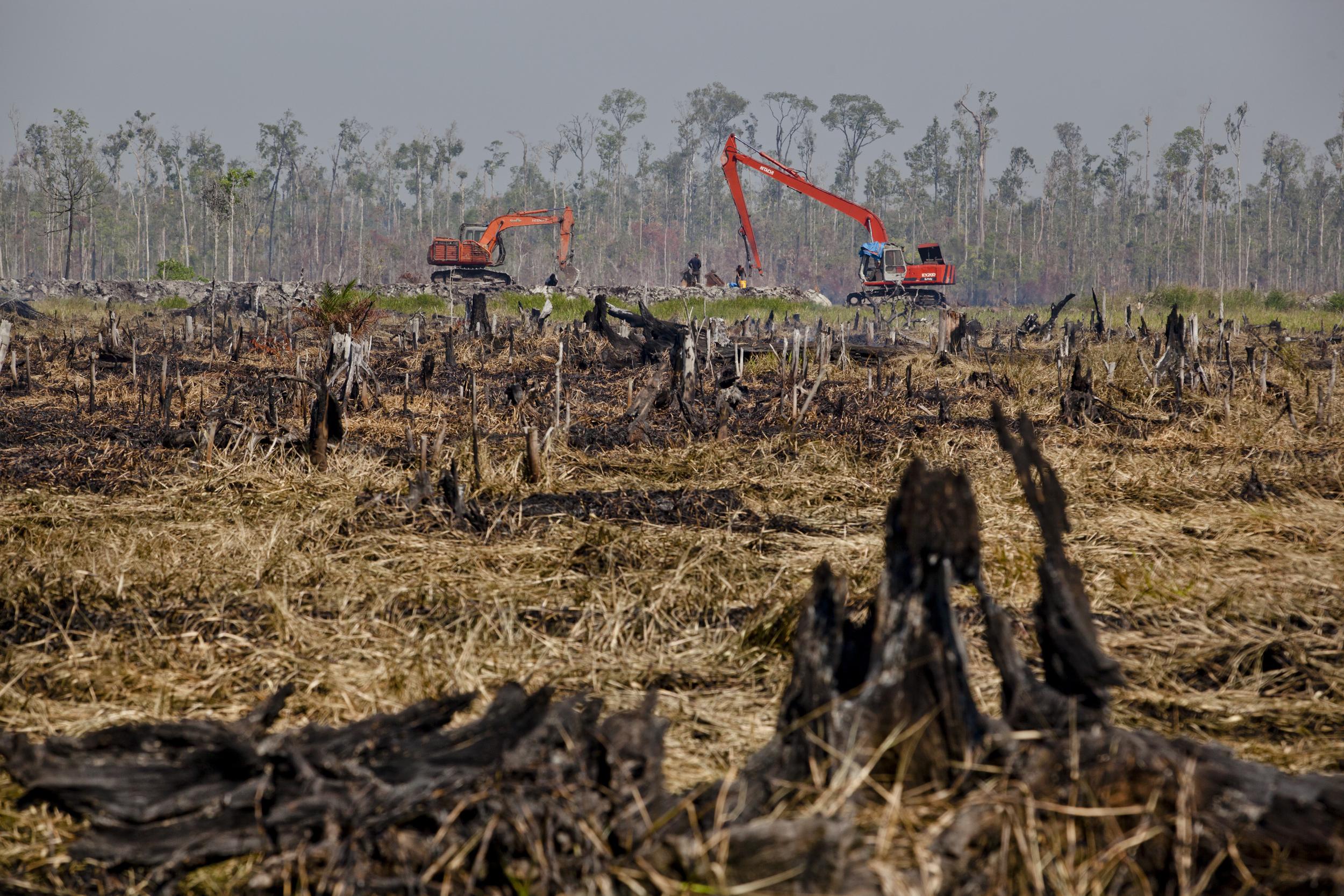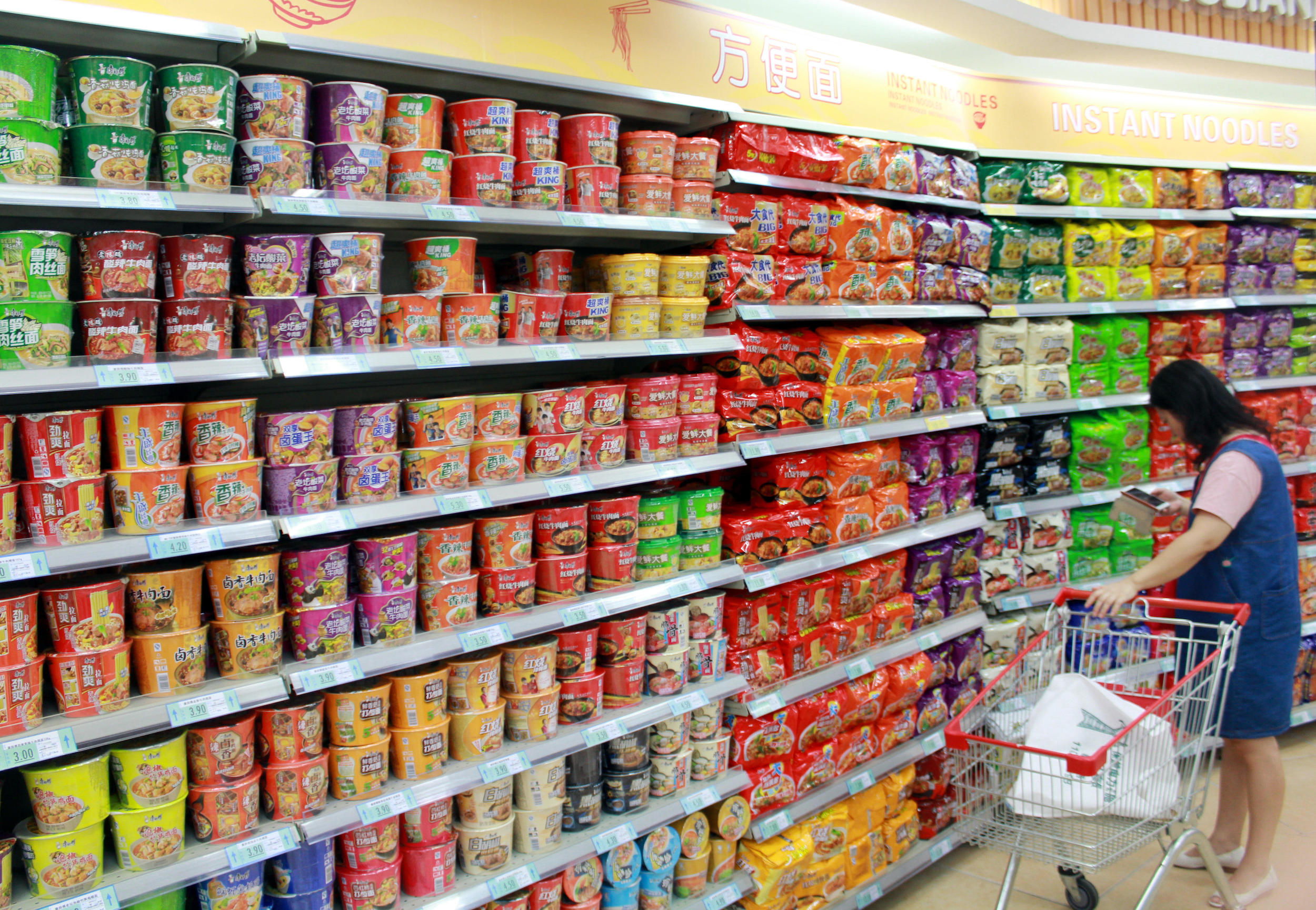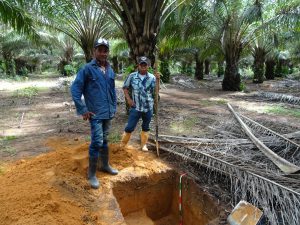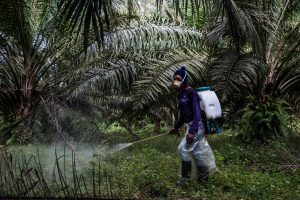There is perhaps no other raw material as ubiquitous as palm oil, yet so little discussed in a market as big as China.
The oil palm provides higher yields than any other vegetable oil crop and accounts for 35% of global food oil production. Its oil can be found in almost half of all products on supermarket shelves, from packaged foodstuffs to cleaning products and cosmetics. It is also used as a fuel: until recently, the EU and US promoted its use as a biofuel to reduce carbon emissions.
But rising production and demand in the past 20 years has led to faster felling of forests to make way for plantations in Indonesia and Malaysia, the main producer nations. Many of the trees stood in peat swamp forests, which are hugely efficient stores of carbon. When these forests are cleared, the peat dries out and carbon is released. For years, the peatlands of Indonesia have been releasing as much carbon per year as the entire state of California – meaning that biofuel policies designed to cut emissions have had the opposite effect.
Since 2005, forest fires caused by clear-cutting have become uncontrollable annual events. Forest loss also deprives many wild animals, including orangutans, of their habitats, threatening their survival. And then there are the issues of land expropriation and child and forced labour associated with the palm oil supply chain.

Last year, the EU decided to phase out palm oil-derived biofuels by 2030. In both the EU and US markets, sales of certified sustainable palm oil, which uses third-party oversight to at least partially bar environmentally, socially and economically harmful practices, are on the rise.
But the issue of the sustainability of any commodity cannot be discussed without looking at the huge Chinese market. Palm oil is no exception.
The crucial market
Ranked by nation, China is already the world’s second-largest importer and third-largest consumer of palm oil, despite not having any binding policy on biofuels containing it. All that the country consumes is imported: an average of 1 million tonnes a year were brought in during the 1990s, but in 2000 that started to increase rapidly, and in 2018, it stood at about 6.8 million tonnes. According to customs data obtained by the China programme of CDP, a non-profit working on environmental information transparency, China imported 8.49 million tonnes of palm oil in 2019 – about 17% of global imports for the year.
That sudden increase is commonly attributed to China replacing soybean oil with palm oil due to its ongoing trade war with major soy producer the US. But Khor Yu Leng, a Singapore-based political economist who studies palm oil issues, told China Dialogue that the role of the trade war has been exaggerated. She argues that instead, one of the main causes has been the African swine flu, which has reduced demand in China for soybean meal, a by-product of soybean oil production. Without the demand for soy as an animal feed, soybean oil has less of a price advantage over palm oil.
In the long term, the country’s demand for palm oil is only going up. A growth rate of 10% year-on-year was expected before the Covid-19 outbreak began. With EU demand set to plummet following its ruling on biofuels, as well as a trade war between India and Malaysia, China’s market has become particularly important for the two main producer nations.
According to Khor Yu Leng, there is also increasing Chinese demand for palm oil as a cheap alternative to diesel, especially for use in the likes of fishing vessels and farm machinery. In 2018, the country’s imports of the biofuel palm methyl ester (PME) increased almost 50-fold, to 750,000 tonnes. Currently, China has no binding policy on biofuels containing palm oil.
Last year, China removed import quotas for palm oil – a move seen as designed in part to encourage domestic production of biofuel from crude palm oil. According to customs data collected by CDP, China’s imports of crude palm oil have rocketed, from hundreds of tonnes per year previously to almost 50,000 tonnes in 2019. Currently, the country has no binding policy on biofuels containing palm oil.
The huge scale of the Chinese market and its lack of sustainability rules, combined with the ongoing climate crisis and accelerating biodiversity loss, have resulted in a greater focus on China’s palm oil supply chain.
A long infancy
Despite the urgency of the issue, China lags far behind on sustainable palm oil.
Jin Zhonghao, senior advisor to the WWF, says that work “started fairly early, but remains at an early stage”. There is still a lack of consensus across key stakeholders – including businesses, government and the public. Even the question of whether any action should be taken on sustainable palm oil remains undecided, much less who should do what.
In China, a movement for sustainable palm oil can perhaps be traced back to 2006, when Greenpeace’s China branch exposed deforestation in Southeast Asia caused by oil palm cultivation. It urged multinationals involved in the palm oil value chain, including Unilever, Sinar Mas, KFC, Nestlé and Procter & Gamble, to stop engaging in or funding that deforestation.
But sustainable palm oil is not yet a topic of public discussion in China, nor does it feature often in the media – due to the remoteness of the producing nations and a lack of environmental awareness among the public.
Another factor is that palm oil is effectively invisible. Though it accounts for nearly 20% of vegetable oil consumption in food in China, consumers rarely realise this. Unlike other cooking oils, palm oil is almost never sold to consumers as a standalone product on supermarket shelves, but as an ingredient blended with other oils. Palm oil is only marketed as a discrete product to businesses, attracting buyers thanks to its cheap price and suitability for baking and frying. And though palm oil is commonly used in processed foods such as instant noodles, puffed foods, sweets, biscuits and ice cream, it is usually listed on the label as “vegetable oil” – because of concerns over the high levels of saturated fats and fatty acids in palm oil.
This means that the majority of Chinese people are not aware of palm oil, much less concerned with its sustainability.
Perhaps the most promising event to change this situation occurred in 2013, when the Roundtable on Sustainable Palm Oil (RSPO), the world’s leading palm oil sustainability scheme, started work in China. It has signed up members, promoted RSPO supply chain certification, and carried out advocacy work with consumers, businesses and government.
RSPO certification requires businesses to ensure the production, sale and use of palm oil protects and strengthens ecosystems and the environment, respects human rights and benefits communities. The standard continues to be updated, with the latest 2018 edition banning all forms of deforestation. Currently, the RSPO has 4,700 global members and has issued over 9,000 certificates. To date, 19% of global palm oil production has RSPO certification.
As of the end of April this year, the RSPO had 149 members in Mainland China and had issued 103 certificates to 87 of them. But according to RSPO China, currently only 2% of Mainland China’s palm oil imports have sustainability certification – some way from its target of 10% certification by the end of 2020. In comparison, certification rates in the EU are 80-90%, with 100% aimed for by the end of the year.
There are various reasons for the low level of certification. Most of China’s palm oil imports are controlled by a few big traders, including Yihai Kerry, the China Oil and Foodstuffs Corporation (COFCO) and Musim Mas. In 2018, 89% of China’s palm oil imports were made by only 16 companies, and 53% by only five of them. Though many of these firms do already trade a lot of certified palm oil around the world, they are failing to do so in China. There, domestic firms only get involved once the oil has been imported, at which point it is hard to trace to its source and so receive RSPO certification.
The RSPO’s deputy country representative, Wan Jian, told China Dialogue that partly for that reason, while the organisation’s ultimate aim is to promote certification, in China it’s currently pushing a “book & claim” model. The model aims to encourage downstream businesses like manufacturers and retailers to get onboard the sustainable palm oil process, while sorting out and making changes in their supply chain later. Businesses that buy credits from certified upstream growers, crushers and smallholders are allowed to put the RSPO credit logo (which is different from a certification logo) on products, despite them not necessarily containing certified palm oil.
Another reason for the low certification coverage is price. Estimates of the premium charged for certified palm oil range from 3% to 30%. Given consumers are generally unaware palm oil is used in their products, and with no way of knowing if they would be willing to pay more for sustainability, companies are reluctant to act. They often complain that a lack of consumer awareness is an obstacle to sustainability certification.
Big firms need to act first
Others challenge this view.
In June 2019, the UNDP (United Nations Development Programme) held a meeting on sustainable palm oil in Beijing, attended by Chinese and Indonesian government officials, businesses, academics and NGOs. According to the minutes, experts described the companies’ complaints of a lack of consumer awareness as a “nonsense excuse”. They said that in China’s highly concentrated consumer goods market, multinationals can and should create market demand, rather than waiting for consumers to make demands. A subsequent UNDP report on the China–Indonesia palm oil value chain said the “market concentration in the trading segment of the value chain and the relative dominance of a few firms in retailing” provides good conditions for developing sustainability in the Chinese market.
“If you want consumer support, there has to be something for them to support,” said Jin Zhonghao. He told China Dialogue that WWF has a clear roadmap for sustainable palm oil in China. First, seek a consensus among leading trading, manufacturing and retail firms and have them act. Then look for support from green finance, government and corporate procurement, as well as more aware consumers. “Someone has to feel their way across the river first,” Jin said.
Lack of consumer awareness is a ‘nonsense excuse’
To leverage moves by larger firms, in July 2017 the WWF and the RSPO, along with the China Chamber of Commerce of Foodstuffs and Native Produce, an industry association including firms in the food oil sector, formed the China Sustainable Palm Oil Alliance. Early members include multinationals such as AarhusKarlshamn China, Cargill China, HSBC, L’Oreal and Mars Wrigley Confectionery, which have pledged to act as leaders on sustainable palm oil and carry out advocacy in the sector. But Jin Zhonghao says these multinationals have very limited influence in China, and commitments and action from leading domestic firms will be necessary.
A leader among them is the state-owned COFCO. It imported 11% of China’s palm oil in 2018, and holds multiple RSPO supply chain certificates, but there is still vast room for it to increase its sustainable palm oil uptake. Last June, COFCO Donghai – a COFCO joint venture and the main producer of food oils for COFCO’s Fulinmen brand – responded “to client demand” and produced a sustainable palm oil policy. In November, COFCO International, the group’s sole overseas procurement, allocation, investment and development platform, also published a sustainable palm oil sourcing policy. Both policies cover the two companies’ entire supply chains.
Policies into action
According to Jin Zhonghao, these new policies are a positive step and he looks forward to progress in their implementation. The firms need to disclose their progress and ensure civil society can exercise oversight. He thinks that with leading domestic firms making pledges or policies, and disclosing information about their progress, the government will be better prepared to issue policies guiding the entire value chain to become more sustainable.
Corporate commitments and openness is another route to sustainability, alongside public oversight and certification. In late 2013, Wilmar International, a company which controls 45% of the global trade in palm oil and owns Yihai Kerry, published the world’s first “No Deforestation, No Peat, No Exploitation Policy”. This commitment was made before the RSPO had a full deforestation ban, but while environmental campaign groups were applying sustained pressure. Many other companies in the palm oil value chain followed suit. But once policies have been put in place, there is still much work to be done to ensure traceability and sustainability goals are being met. It’s still a challenge for civil society to ensure companies implement their sustainability policies.
Zhang Yige, head of CDP’s China programme, told China Dialogue that the Shanghai and Shenzhen stock exchanges may this year start to require disclosure of environmental, social and governance (ESG) information. This will encourage firms to take another look at issues in the palm oil supply chain – palm oil has always been a focus during ESG investing. CDP China has just published a report on deforestation and business risks in China’s palm oil value chain. It found that the vast majority of firms weren’t aware of the risks they faced from using unsustainable palm oil, such as losing overseas business.
Government action
Of course, the government has a crucial role to play. But as the UNDP report says: “A strong, clear policy signal in favour of sustainable palm oil has yet to emerge in China.”
The report has a number of suggestions for the Chinese government: send clear signals to businesses to encourage green global supply chains; carry out trials of best practices in partnership with producer nations; use the South-South Cooperation and Green Belt and Road frameworks to provide technology and funding to producer nations; use procurements and tariffs to encourage the trade in sustainable palm oil; and guide companies to purchase sustainable palm oil.
But a positive signal did emerge recently. At the end of May, the draft of an updated Directory of Supported Green Bond Projects jointly published by the Bank of China, the National Development and Reform Commission, and the China Securities Regulatory Commission for public consultation includes – for the first time – green agricultural commodities certified by the RSPO and other international schemes.
Khor Yu Leng stressed the importance of intergovernmental cooperation. She said certification systems led by large bodies, such as the RSPO, are not inclusive enough for smallholders (although efforts are being made). This might create a new segment in the market, rather than bringing real change, she said. The Indonesian and Malaysian governments each have their own certification schemes (ISPO and MSPO), which aim to cover all producers. Khor holds that if China could recognise these schemes as “green” and run trials of best practices with both governments, and even establish provincial partnerships for technical support, the palm oil sector would become more sustainable.

Khor Yu Leng told China Dialogue that smallholders account for 40% of palm oil cultivation by area in Indonesia (the ratio is similar in Malaysia), but produce lower yields at higher costs, and are unable to afford expensive certification schemes. She believes that, in the future, if the Dalian Commodity Exchange – China’s only exchange trading in palm oil futures – sold a new futures product for sustainable palm oil produced by smallholders, this could result in positive outcomes.
Palm oil reflects the wider problems China faces in establishing green global supply chains. Jin Zhonghao described the process as still at an exploratory stage. When green supply chains are mentioned, some people hear green trade barriers. The government wants to see businesses take the lead and will get involved once it has decided it is in the national interest. China’s shift in stance on climate change is one earlier example.
But Jin Zhonghao thinks that working with producer countries to decouple China’s commodity supply chain from negative environmental footprints, including deforestation, is in the country’s core interests, as it is in line with the construction of an ecological civilisation and the Green Belt and Road strategy, as well as China’s commitments as a responsible power on climate change and biodiversity loss. In which case, worries about green trade barriers should not be an obstacle.
With input from Dr. Josie W. Phillips, palm oil researcher for China Dialogue.
This article is part of our ongoing series on palm oil. Explore the series to date here.









